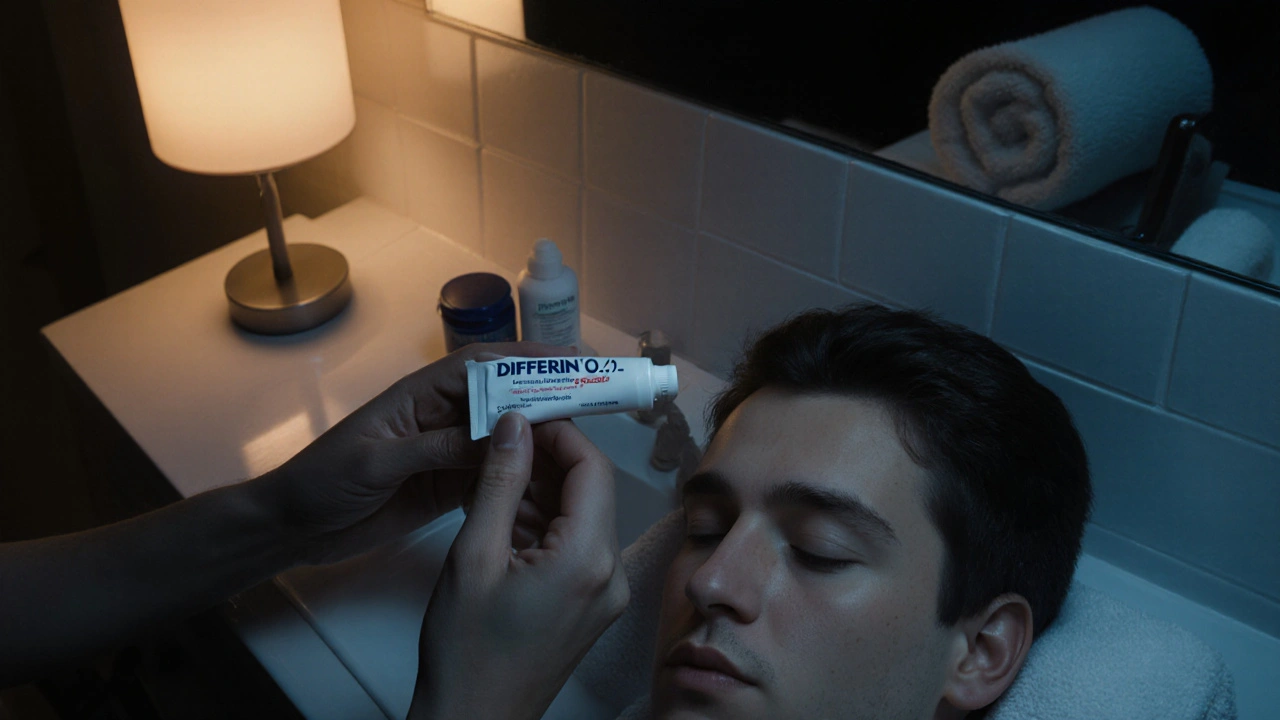Adapalene – The Acne‑Fighting Retinoid You Need to Know
When working with Adapalene, a synthetic retinoid formulated for topical acne treatment. Also known as Differin, it targets clogged pores and inflammation while being gentle enough for daily use.
Adapalene belongs to the broader class of Retinoids, vitamin A‑derived compounds that regulate skin cell turnover. Retinoids like tretinoin, isotretinoin, and adapalene share the ability to speed up shedding of dead skin cells, but adapalene’s chemical structure makes it more stable against oxidation, which reduces irritation for many users. This stability is why dermatologists often recommend it as a first‑line prescription for mild to moderate Acne vulgaris, the common form of acne characterized by blackheads, whiteheads, and inflamed lesions.
How Adapalene Works and Why It Matters
Adapalene encompasses two key actions: it normalizes the shedding of skin cells inside the follicle and it modulates inflammation. In practice, that means fewer clogged pores and less redness. The medication also influences keratinocyte differentiation, a technical way of saying it helps skin cells mature properly. Because of these mechanisms, Adapalene often shows results within four to eight weeks, faster than many older retinoids.
However, the drug doesn’t work in a vacuum. A well‑designed Skin‑care routine, the set of cleansing, moisturizing, and sun‑protection steps you follow daily can boost its effectiveness. Gentle, non‑comedogenic cleansers remove excess oil without stripping the barrier, while a light, oil‑free moisturizer prevents dryness that sometimes accompanies retinoid use. Sunscreen is non‑negotiable; adapalene can make skin more sensitive to UV light, so a broad‑spectrum SPF 30 or higher protects against sunburn and pigment changes.
Dermatologists play a pivotal role in guiding adapalene therapy. They assess acne severity, recommend appropriate strength (0.1 % or 0.3 % formulations), and advise on adjunct treatments like benzoyl peroxide or oral antibiotics when needed. Their expertise helps patients avoid common pitfalls such as over‑exfoliating or mixing incompatible actives, which can counteract the medication’s benefits.
Adapalene also interacts with other acne‑related concepts. For instance, diet influences sebum production, and hormonal fluctuations can trigger breakouts, so a holistic approach that includes lifestyle tweaks often yields the best outcomes. Moreover, patients with sensitive skin may start with alternate‑day application before moving to nightly use, illustrating how dosage flexibility tailors treatment to individual tolerance.
When you combine adapalene with proper skin‑care, professional guidance, and realistic expectations, the chances of clear skin rise dramatically. Recent clinical surveys show that more than 70 % of users report visible improvement after three months, especially when they stick to the recommended routine and avoid harsh scrubs.
Below, you’ll find a curated set of articles that dive into related topics—diet’s effect on gout medication, comparisons of allergy drugs, cheap generic options for common prescriptions, and more. While not all are about acne, they share the common thread of medication management, side‑effect awareness, and practical buying guides, giving you a broader picture of how to navigate prescription therapies safely and affordably.
Explore the collection to see how informed choices, whether they involve adapalene or any other drug, can improve your health outcomes and keep you in control of your treatment plan.
Differin (Adapalene) vs Other Acne Treatments: In‑Depth Comparison
Compare Differin (adapalene) with top acne treatments, see pros, cons, costs, and how to choose the best option for your skin.
- View More
- 11

